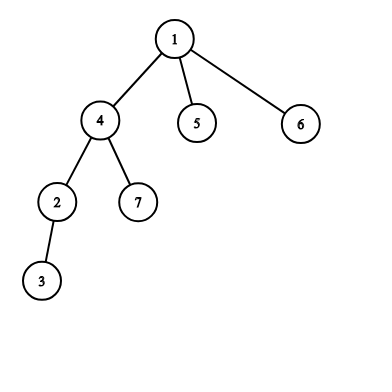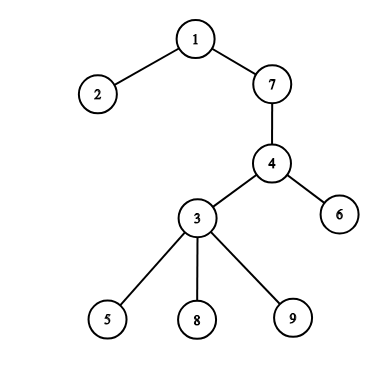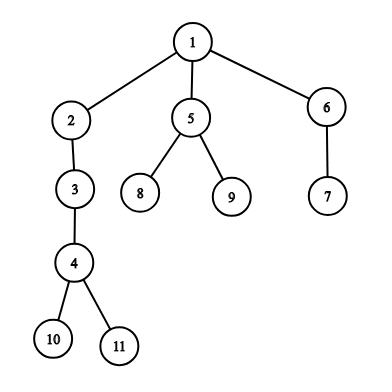CF1073F.Choosing Two Paths
普及/提高-
通过率:0%
AC君温馨提醒
该题目为【codeforces】题库的题目,您提交的代码将被提交至codeforces进行远程评测,并由ACGO抓取测评结果后进行展示。由于远程测评的测评机由其他平台提供,我们无法保证该服务的稳定性,若提交后无反应,请等待一段时间后再进行重试。
题目描述
You are given an undirected unweighted tree consisting of n vertices.
An undirected tree is a connected undirected graph with n−1 edges.
Your task is to choose two pairs of vertices of this tree (all the chosen vertices should be distinct) (x1,y1) and (x2,y2) in such a way that neither x1 nor y1 belong to the simple path from x2 to y2 and vice versa (neither x2 nor y2 should not belong to the simple path from x1 to y1 ).
It is guaranteed that it is possible to choose such pairs for the given tree.
Among all possible ways to choose such pairs you have to choose one with the maximum number of common vertices between paths from x1 to y1 and from x2 to y2 . And among all such pairs you have to choose one with the maximum total length of these two paths.
It is guaranteed that the answer with at least two common vertices exists for the given tree.
The length of the path is the number of edges in it.
The simple path is the path that visits each vertex at most once.
输入格式
The first line contains an integer n — the number of vertices in the tree ( 6≤n≤2⋅105 ).
Each of the next n−1 lines describes the edges of the tree.
Edge i is denoted by two integers ui and vi , the labels of vertices it connects ( 1≤ui,vi≤n , ui=vi ).
It is guaranteed that the given edges form a tree.
It is guaranteed that the answer with at least two common vertices exists for the given tree.
输出格式
Print any two pairs of vertices satisfying the conditions described in the problem statement.
It is guaranteed that it is possible to choose such pairs for the given tree.
输入输出样例
输入#1
7 1 4 1 5 1 6 2 3 2 4 4 7
输出#1
3 6 7 5
输入#2
9 9 3 3 5 1 2 4 3 4 7 1 7 4 6 3 8
输出#2
2 9 6 8
输入#3
10 6 8 10 3 3 7 5 8 1 7 7 2 2 9 2 8 1 4
输出#3
10 6 4 5
输入#4
11 1 2 2 3 3 4 1 5 1 6 6 7 5 8 5 9 4 10 4 11
输出#4
9 11 8 10
说明/提示
The picture corresponding to the first example: 
The intersection of two paths is 2 (vertices 1 and 4 ) and the total length is 4+3=7 .
The picture corresponding to the second example: 
The intersection of two paths is 2 (vertices 3 and 4 ) and the total length is 5+3=8 .
The picture corresponding to the third example: 
The intersection of two paths is 3 (vertices 2 , 7 and 8 ) and the total length is 5+5=10 .
The picture corresponding to the fourth example: 
The intersection of two paths is 5 (vertices 1 , 2 , 3 , 4 and 5 ) and the total length is 6+6=12 .